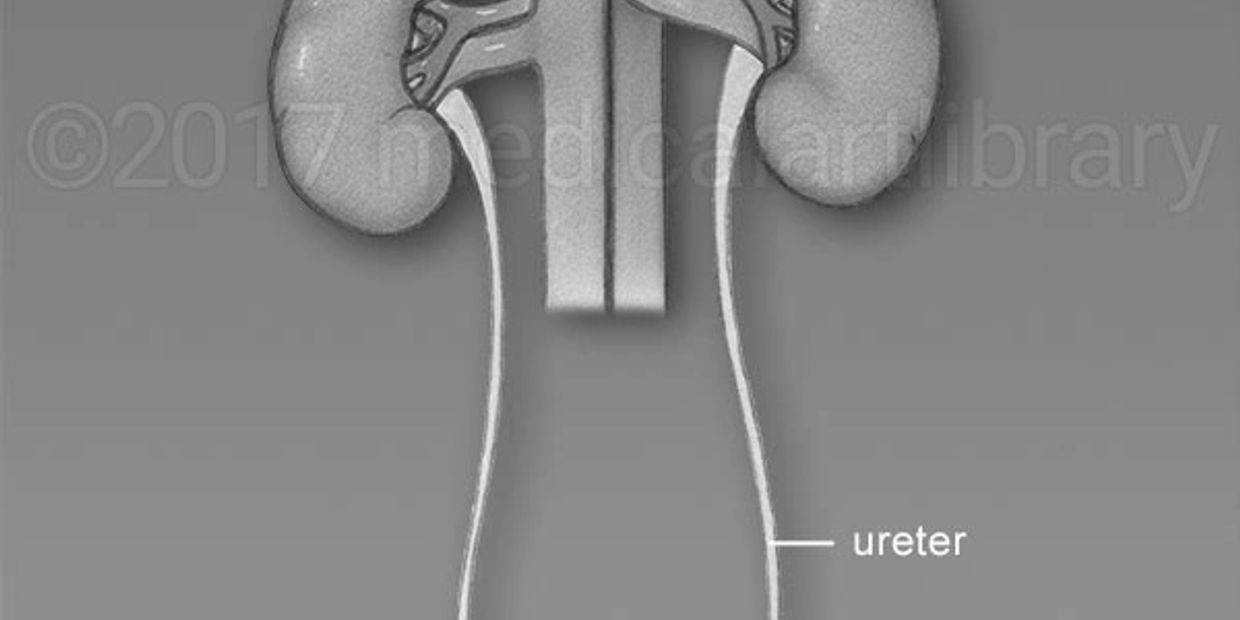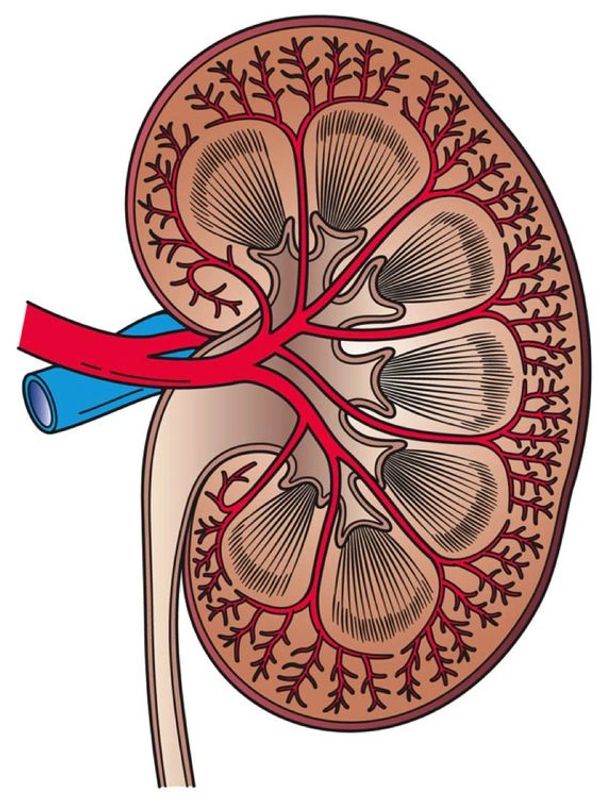THE URINARY SYSTEM

The urinary tract consists of the kidneys, urinary bladder, and tubes.
Such organs regulate the amount of water and salts that are then absorbed back into the blood, and what is extracted as residues.
This system, besides, is functioning as a blood filtration device.
The Mechanism and Function of the Urinary System
Our body absorbs from the diet the nutrients and uses them to sustain certain functions, including energy and self-healing functions.
The leftover items are left behind in the blood and in the intestines after the body has absorbed what is required from foods.
The urinary system works with the kidneys, blood, intestines, and all other residue-eliminating organs to ensure a sufficient ratio of the toxic compounds and fluids from the body.
Adults lose one and a half liters of urine a day.
The volume of urine depends on many factors, including the amount of fluid and food ingested, and how much material is lost by sudor and respiration.
Some forms of medications can also influence the removal of urinary quantity.
The urinary system does away with a type of residue called urea.
The Ureea is formed as the organism breaks down the food sources that contain proteins such as milk, poultry meat, and several legumes.
The Urea is transferred in the kidneys through the sanguine flux.
The Kidneys extract the Urea from the blood by certain tiny filtration devices called nephrons.
That nephron consists of a small ball composed of small capillaries of sanguine, called glomerular, and a narrow tube called the renal tunnel.
Urea (carbamide), along with water and other remaining material, forms the urine that travels from the nephrons down to the bottom of the renal kidney tubing.
Through the kidneys, the urine flows down to the urinary bladder into two small tubes called urethras.
The Urethras are roughly 8-10 cm. in length.
The muscles from the urethra walls contract and loosen continuously, causing the urine to flow out from the kidneys.
If the urine is allowed to remain indefinitely in the kidneys, a kidney infection can develop.
Large volumes of urine are drained from the urethras approx. into the urinary bladder.
Per 10 to 15 seconds per time.
The urinary bladder will collect urine before it is available in the toilet to be removed.
When it is full, it swells in a circular shape, and when it is empty, it is smaller.
If the urinary tract is safe, the urinary can be safely preserved for 2 and 5 hours before 16 ounces (two cups) of urine.
The circular muscles called sphincters tend to contain the urine, ensuring that it is not leakable.
These muscles enclose like a rubber band, the opening in the urethra of the urinary bladder, the tube that enables the water to flow out of the body.
The bladder's nerves signal whether is time for urinating or emptying the urinary bladder. When the bladder is filled with urine, urinating is required.
The urinating feeling is getting greater as the bladder begins to fill and hits its maximum.
During that time, the nerves give a signal to the brain, which means the bladder is full, and the need for bladder emptying intensifies.
As we urinate, the brain sends instructions to the urinary bladder muscles to contract and squeeze the urine out of the urinary bladder.
Around the same time, the hippocampus is urging the sphincter's muscles to relax.
Since certain muscles relax, urine issues through the urethra from the urinary bladder.
Normal urine is formed when all of the signals occur in the appropriate order.







The origins of the urinary- stage conditions
The complications may be caused by aging, cancer, or disruption at the surface of the urinary system.
When we increase with age, improvements in the kidney system tend to indicate whether they may lose a portion of their ability to extract toxins from the blood.
Often, the muscles of the urethra, the urinary bladder, and the urethra begin to lose some of their energy.
Like certain urinary diseases, it is likely to occur when the muscles of the urinary bladder do not relax enough to drain the urinary bladder fully.
A reduction in sphincter and pelvis muscle resistance can also induce incontinence, excessive urinary leakage.
Disease or injury can also prevent essential blood filtration through the kidneys, which can block urinary flow.
Some urinary system disorders The urinary system disorders can be grouped into a continuum of severity from simple to severe, which can threaten life.
Benign prostate hyperplasia (HBP)
HBP is a men's condition that affects the prostate gland that is part of men's reproductive system.
The prostate is situated and encloses the urethra in the lower part of the urinary bladder.
HPB is a prostate gland extension that can interact with older men's urinary function. It regulates the blockage of urethra gripping and can cause urination challenges.
Men with HBP, also have other urinary bladder effects, including a rise in urinary volume, as well as during the daytime and at night time.
Painful/aching bladder / interstitial cystitis (SVD / IC) syndrome
This is a chronic urinary bladder disease, in which the urinary bladder wall can become inflamed and irritated.
Inflammation may lead to lesions and urinary bladder stiffening, reduced urinary bladder capacity, and, in extreme cases, urinary bladder mucus ulcers.
The cause of the condition at the present is unclear.
Kidney stones
Kidney Stones are the term widely used in the urinary system to refer to stones or fractions.
The stones develop in the kidneys, and they can be located elsewhere in the urinary system.
They can vary in scale.
Some cause big headaches, while others do less harm.
The purpose of the procedure is to remove the blocks, avoid the infection, and avoid reappearance.
Prostatitis
Prostatitis represents the prostate inflammation that contributes, among other signs, to regular and rapid urination, swelling or urinary ache, a disorder called dysuria, and discomfort in the lower back and genital region.
Prostatitis is caused in some cases by a bacterial infection, which may be treated with antibiotics.
However, certain specific causes of prostatitis are immune to other recognized species.
Most of the antibiotics are ineffective in the diagnosis of causes of nonbacterial prostatitis.
Proteinuria is the presence of such abnormal protein concentrations in the urine.
The balanced kidneys strip out blood traces but leave proteins.
The present proteins in the urine may not in themselves pose a concern,
but they can be an indication that the kidneys are not working correctly.





TRADITIONAL MEDICINE
The primary function of the kidneys is to remove toxins from the body; more specifically from the blood - through urine -.
Although the kidneys represent a filter for the impurities, they also necessitate some support.
The wellness of the human body requires a healthy diet. Such foods facilitate the release of stored toxins in the kidneys.
Fortunately for the renal system, we have some nutrients and useful plants at our fingertips.
Herbs & Essential Oils
Gale of the Wind (Phyllanthus niruri)
Gale of the Wind (Phyllanthus niruri)
Gale of the Wind (Phyllanthus niruri)

This plant, originally from Peru, was used by the
Incas to treat various kidney and urinary tract infections.
The gale of the wind is a plant that is useful to the kidneys because: has a diuretic function, helps control blood pressure, reduces blood glucose, kills kidney stones. This herb is also valuable for the liver at the same time.
Parsley (Petroselinum crispum)
Gale of the Wind (Phyllanthus niruri)
Gale of the Wind (Phyllanthus niruri)

Parsley is a spice included in many culinary recipes. It has medicinal properties and contributes to the detoxification of the kidneys due to its diuretic effect.
Parsley eliminates toxins and generally contributes to the health of the urinary tract.
Celery (Apium graveolens)
Gale of the Wind (Phyllanthus niruri)
Lady's bedstraw (Galium verum)

The plant itself and its seeds have a diuretic effect.
Celery helps to eliminate the urine and tones of the kidneys to make them work better.
Lady's bedstraw (Galium verum)
Field horsetail (Equisetum arvense)
Lady's bedstraw (Galium verum)

The Lady's bedstraw is a plant native to the American continent, used by Native Americans to protect the health of the urinary tract. Due to its anti-inflammatory and diuretic properties, it stimulates the elimination of toxins accumulated in the kidneys and bladder.
Hydrangea
Field horsetail (Equisetum arvense)
Field horsetail (Equisetum arvense)

Hydrangea root tea helps to eliminate kidney stones because it helps to erode their edges (those parts that cause pain because it starts) and eliminates them through the urine.
Moreover, hydrangea also contributes to the metabolism of calcium, lowering the probability of kidney stones.
Field horsetail (Equisetum arvense)
Field horsetail (Equisetum arvense)
Field horsetail (Equisetum arvense)

Farmers and gardeners consider it to be a simple "weed," but this conception is wrong.
E.arvense has a lot of medicinal properties.
For example, it has a diuretic action and promotes the production of urine.
The herb also fights against water retention. It is rich in antioxidants that protect the health of the kidneys and can be used as an infusion.
Marshmallow (Althea officinalis)
Bearberry (Actostaphylos uva-ursi)
Bearberry (Actostaphylos uva-ursi)

The root of this plant supports the health of the urinary tract and is beneficial for the renal system. It is a diuretic that is worth a try because it eliminates the toxins accumulated in the kidneys through the urine.
Bearberry (Actostaphylos uva-ursi)
Bearberry (Actostaphylos uva-ursi)
Bearberry (Actostaphylos uva-ursi)

This plant is often used against urinary tract infections. It has an astringent effect that helps fortify the urinary tract and kidneys.
- Home
- Somatic Archeology
- Halotherapy
- Cranio-Sacral Therapy
- Chelation Therapy
- Diabetes Therapy
- Colon Hydrotherapy
- Magnetic Field Therapy
- Hypnosis
- Kinesiology
- Oxygen Therapy
- Lymphatic drainage
- Enzyme therapy
- Detox Therapy
- Cryotherapy
- Reflexotherapy
- Body Wrap Therapy
- Colon Hydrotherapy
- Ancient Chinese Medicine
- SPA Treatments
- Visceral Manipulation
- Pelotherapy
- Services
- Our Proposal
- Human Infrastructure
CenterforAncientAlchemyandTheHealingArts
Copyright © 2022 CenterforAncientAlchemyandTheHealingArts - All Rights Reserved.
Powered by GoDaddy Website Builder
